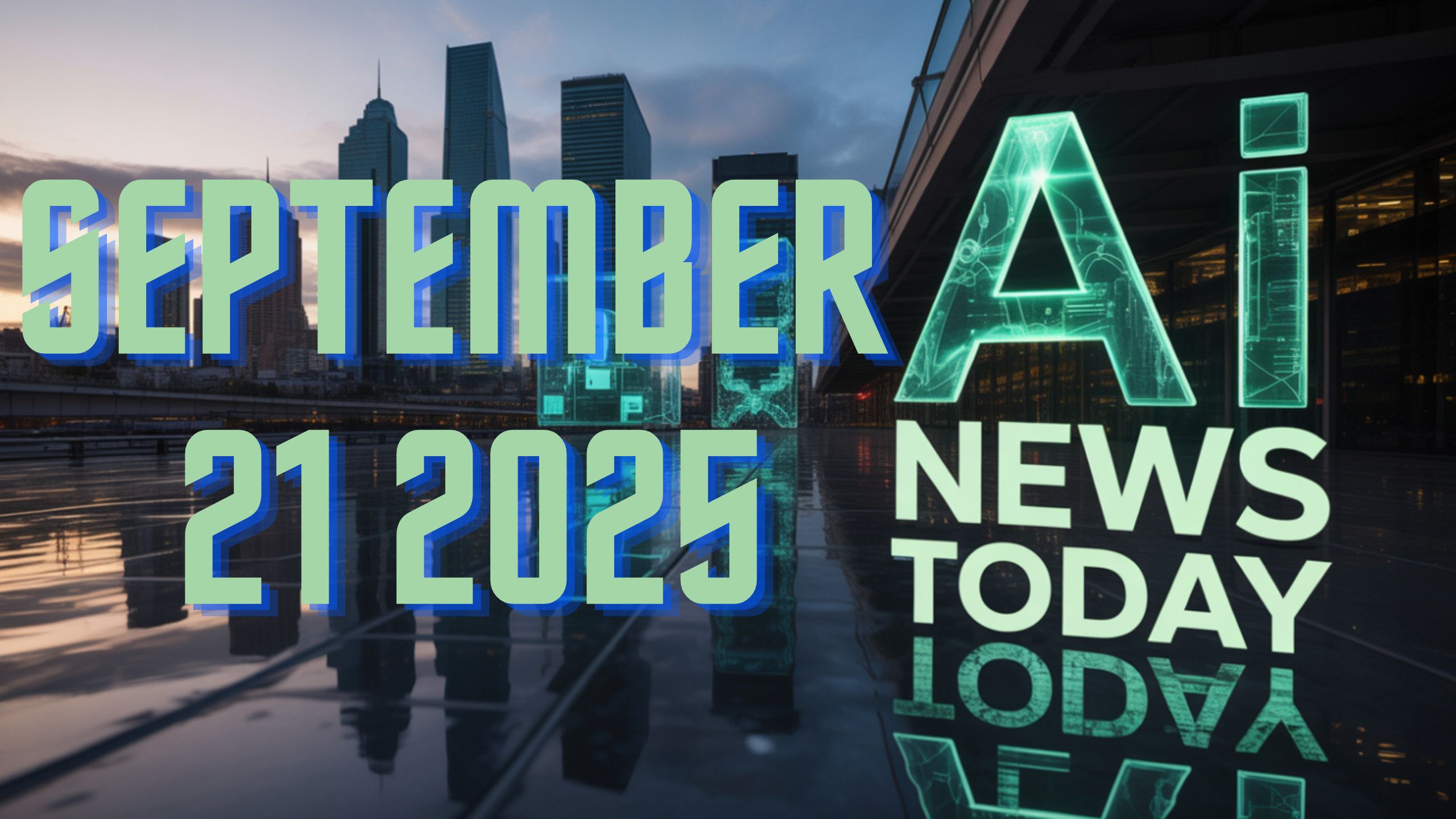AI News Daily — USA (Monday, September 22, 2025)– The intersection of immigration policy, AI labor supply, and corporate strategy is rapidly becoming one of the most critical conversations in US tech policy circles. With analysts warning that a proposed $100,000 H-1B fee could reshape how startups and tech giants source talent, the ripple effects extend beyond hiring practices to offshoring, automation adoption, and AI-powered substitution. In this in-depth analysis, we examine how policy moves influence labor dynamics, the data center investment boom, AI-powered platform ecosystems, education initiatives, compliance automation, and global partnerships—each playing a role in shaping the future of innovation in the US.
H-1B Fee Hikes and the Acceleration of Offshoring
A six-figure H-1B application fee could fundamentally alter the cost-benefit equation of hiring international talent. Traditionally reliant on H-1B talent to fill critical technical roles, startups may now face difficult decisions. High fees incentivize companies to either:
- Expand offshore engineering centers in lower-cost regions like India, Eastern Europe, or Southeast Asia.
- Invest aggressively in AI automation to substitute for human labor, particularly in software testing, support, and documentation roles.
- Shift to remote-first global teams, bypassing the US immigration system altogether.
For tech giants like Google, Microsoft, and Meta, the calculus may lean toward a blend of AI augmentation and strategic offshoring, maintaining competitiveness while reducing reliance on costly visa programs.
AI-Driven Hiring and Workforce Transformation
The combination of labor scarcity and rising regulatory costs creates a perfect storm for AI adoption in recruitment, training, and productivity tools. Companies are experimenting with:
- Generative AI-powered code assistants that accelerate development cycles.
- AI-driven DevOps automation reduces the need for large site reliability teams.
- Virtual onboarding systems that train distributed teams more efficiently.
These developments point toward a future where AI-human hybrid teams become the default operating model.
Data Center Boom: Wall Street’s Critical Lens
The data center market has become a bellwether for the AI economy. Analysts project trillions in capital expenditure to keep pace with the compute demand driven by LLM training, inference workloads, and cloud growth. Key trends include:
- Oracle’s stock surged, fueled by hyperscale compute deals and cloud AI partnerships.
- Real estate and power grid pressures, as utilities and municipalities race to meet electricity needs for massive GPU farms.
- Investor scrutiny on ROI, as Wall Street evaluates whether sky-high capital spending can sustain shareholder returns long-term.
This capital markets perspective is essential because it ties infrastructure growth to AI innovation cycles, influencing where venture capital and enterprise budgets will flow.
Platform and Creator Economy AI Tools
YouTube’s recent announcements mark a new era of AI-powered creator enablement. The platform introduced:
- AI video editing assistants for faster production workflows.
- Real-time generative overlays and translation tools to globalize content.
- Expanded monetization options to keep creators within the YouTube ecosystem.
These tools are part of the platform arms race, as TikTok, Meta, and Twitch all compete to offer creator-friendly AI toolkits. The result is a lower barrier to entry for content creators, a surge in global video output, and new debates around AI-generated copyright ownership.
Education and Government AI Initiatives
The US Department of Education’s “Your AI Horizons Challenge” is critical to embedding AI into the K-12 education ecosystem. High schools are now tasked with creating practical AI solutions for administrative challenges such as:
- Resource allocation optimization for school districts.
- AI-powered tutoring assistants for underserved communities.
- Predictive analytics to improve student performance tracking.
This shift moves beyond curriculum development into operational AI adoption, creating early exposure to applied AI for the next generation of workers.
Compliance Automation and Regulatory Pressure
Compliance has become a board-level priority with the FTC and other regulators tightening scrutiny around AI safety, privacy, and youth protections. Hyperproof’s AI-driven GRC (Governance, Risk, and Compliance) platform exemplifies the trend toward:
- Automated evidence collection across multiple systems.
- Continuous control testing, reducing manual audit burdens.
- Real-time regulatory reporting, improving transparency and reducing risk.
Enterprises adopting such tools can mitigate compliance costs, stay ahead of regulatory shifts, and focus on innovation rather than reactive risk management.
Global Partnerships Driving US AI Capacity
Nvidia’s joint lab with Abu Dhabi’s Technology Innovation Institute (TII) demonstrates how cross-border R&D partnerships are shaping the future of AI. These collaborations:
- Diversify supply chains, reducing US vulnerability to domestic bottlenecks.
- Accelerate robotics and next-gen model development, feeding back into US product lines.
- Provide a talent pipeline from global AI research hubs to US tech firms.
Such partnerships are crucial as export controls and geopolitical frictions threaten to slow technology transfer between regions.
Academic and Startup Ecosystems Mobilizing Around AI
Universities like MIT are creating structured programs like JetPack to help student founders translate AI-driven ideas into venture-scale companies. These programs include:
- Mentorship from AI experts to refine technical roadmaps.
- Access to compute credits for model training and prototyping.
- Go-to-market strategy support, bridging academia and commercialization.
This initiative aligns with broader national AI workforce goals, ensuring the US remains competitive in producing founders, researchers, and technical operators.
Conclusion: A Convergence of Policy, Capital, and Technology
The convergence of immigration policy, AI labor automation, data center expansion, and global partnerships paints a picture of an economy undergoing rapid structural change. Companies, policymakers, and educators must navigate:
- Balancing talent access with domestic workforce development.
- Managing capital-intensive infrastructure bets with shareholder expectations.
- Deploying AI ethically and responsibly, especially in education and compliance.
The coming years will test whether the US can remain the global hub of AI innovation while maintaining economic inclusivity and long-term sustainability.
Ask Follow-up Question from this topic With Google Gemini: AI News Daily — USA (Monday, September 22, 2025)

Selva Ganesh is the Chief Editor of this blog. A Computer Science Engineer by qualification, he is an experienced Android Developer and a professional blogger with over 10 years of industry expertise. He has completed multiple courses under the Google News Initiative, further strengthening his skills in digital journalism and content accuracy. Selva also runs Android Infotech, a widely recognized platform known for providing in-depth, solution-oriented articles that help users around the globe resolve their Android-related issues.




Leave a Reply